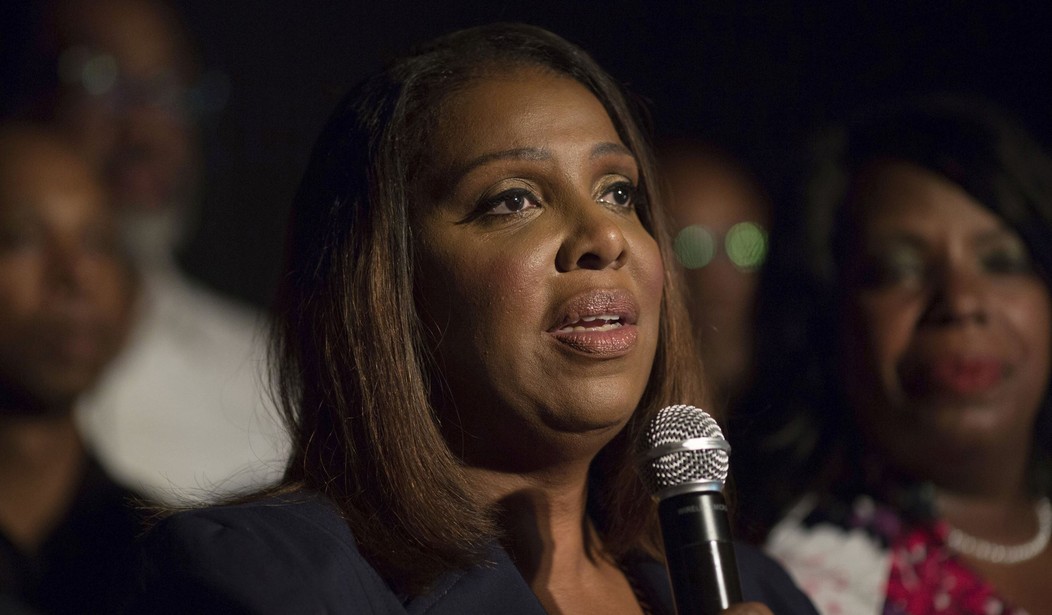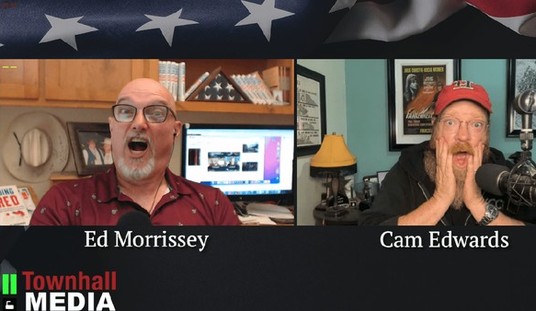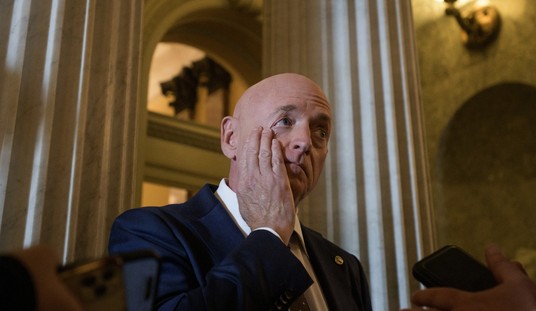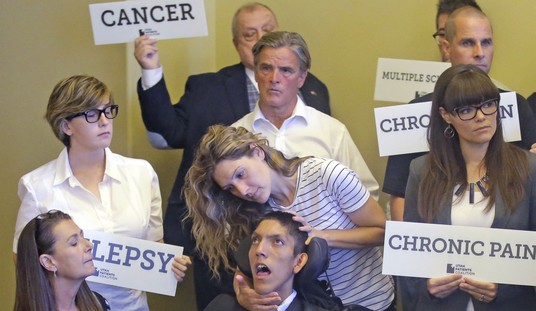We’re a week away from the Supreme Court hearing oral arguments in New York State Rifle & Pistol Association v. Bruen, when the justices will be able to pepper both sides with questions about the state’s restrictive and subjective carry permitting laws. I’m particularly curious to hear what is asked of New York Attorney General Letitia James, who has put forth some pretty bizarre legal arguments while this case has been making its way to the Court. James’ final court brief argues that the state’s laws don’t violate the Second Amendment because there is no right to carry a gun “anywhere (or virtually anywhere) in public,” which isn’t even the question raised by plaintiffs.
And as Second Amendment attorney and scholar Stephen Halbrook writes at the Washington Times, James’ original argument to the Court was even worse.
In the first round of arguments on this case, New York state Attorney General Leticia James went totally off the rails, sidestepping the constitutional issues and focusing instead on race. In arguing against the High Court reviewing the case, Ms. James submitted a brief riddled with false narratives presented as facts. As a historian whose research has been cited by the Court in previous Second Amendment decisions, I can assure the attorney general’s team that if they persist in their racial narrative history and the Constitution will argue against them.
… Ms. James’ brief asking the Supreme Court to reject the case opened by arguing that applicants for self-protection licenses, like Mr. Nash, must “have an actual and articulable need” for self-protection.
But then she went far beyond that, gratuitously (and incorrectly) decrying the history of the Second Amendment and gun ownership in America as driven by the Southern states to encourage slavery and the repression of Blacks. On page 24 of the State’s brief, for example, New York state argues that the South’s allegedly aggressive gun culture directly ties to its embrace of slavery, while in the rest of the country (presumably more civilized) state legislatures were enacting—and courts were upholding—robust public carry restrictions.
This stands history on its head. In fact, if you look at the period from the American Revolution through the adoption of the Bill of Rights in 1791, the impetus for recognizing the right to bear arms came more from Northern states, where slavery had been abolished or was dying, than from Southern states.
Indeed, Southern states at the time banned Blacks from possessing firearms. Even after the Civil War, the so-called Black Codes that Southern states enacted prohibited African Americans from bearing arms—unless they obtained a license, which local officials had discretion to grant or deny, just like contemporary New York.
As Frederick Douglass explained in 1865, “the Black man has never had the right either to keep or bear arms.” With slavery ending, he said, freed people “must have the cartridge box, the jury box, and the ballot box, to protect them.”
… Contrary to the fantasy world in which the New York attorney general lives, New York’s discretionary licensing scheme is part and parcel with the Black Codes and Jim Crow regimes of yesteryear. The difference is that, instead of discriminating only against Blacks, it denies almost everyone the right to bear arms for self-protection.
The goal of New York’s Sullivan Act, enacted in 1911, was to prevent “undesirable” people like immigrants and racial minorities from legally carrying firearms. And while Halbrook is right that the law denies almost everyone the right to bear arms in self-defense thanks to its subjective nature, it’s also very much the case that a disproportionate number of Black New Yorkers are arrested, prosecuted, and sent to prison for carrying a gun without a license. As a group of public defenders pointed out in their brief arguing that New York’s laws should be overturned, while Black residents make up 18% of the state’s population, they account for 78% of the state’s felony gun possession cases. White New Yorkers, meanwhile, make up 70% of the state’s population but only 7% of the state’s gun possession prosecutions.
For our clients, New York’s licensing regime renders the Second Amendment a legal fiction. Worse, virtually all our clients whom New York prosecutes for exercising their Second Amendment right are Black or Hispanic. And that is no accident. New York enacted its firearm licensing requirements to criminalize gun ownership by racial and ethnic minorities. That remains the effect of its enforcement by police and prosecutors today.
The consequences for our clients are brutal. New York police have stopped, questioned, and frisked our clients on the streets. They have invaded our clients’ homes with guns drawn, terrifying them, their families, and their children. They have forcibly removed our clients from their homes and communities and abandoned them in dirty and violent jails and prisons for days, weeks, months, and years. They have deprived our clients of their jobs, children, livelihoods, and ability to live in this country. And they have branded our clients as “criminals” and “violent felons” for life. They have done all of this only because our clients exercised a constitutional right.
Not only is Letitia James trying to rewrite history with her arguments to the Supreme Court, she’s denying the reality of how the state’s gun laws are enforced today. Most importantly, she’s trying to write the right of the People to bear arms out of the Second Amendment entirely; portraying it instead as a privilege to be doled out to the chosen and favored few based on the whims and personal opinions of the judges and sheriffs who serve as the state’s licensing authorities. That doesn’t just turn history on its head. It turns the Second Amendment into a non-entity, and it’s up to the Supreme Court to set the record, and the law, straight.










Join the conversation as a VIP Member